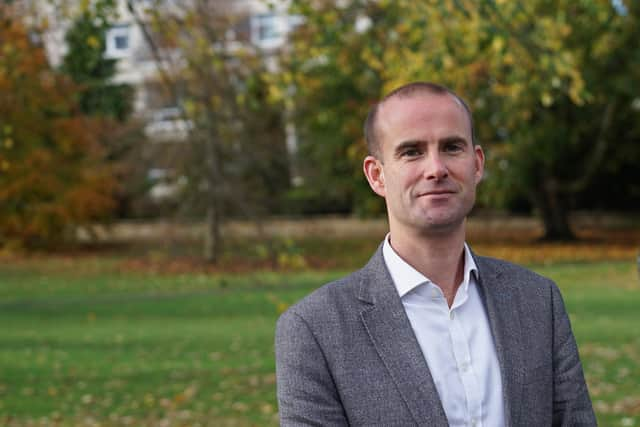How East Yorkshire Battery Energy Storage System is using Tesla technology: Peter Kavanagh
So, how can we balance the ebbs and flows of nature to make renewable reliable?
Renewable energy is fantastic.
It comes from natural sources that will never run out. It doesn’t generate greenhouse gas emissions or create air pollution.
Advertisement
Hide AdAdvertisement
Hide Ad

Wind and solar are the cheapest sources of new electricity – solar energy, for example, is currently a ninth of the cost of gas. And, as an island, the UK is blessed with copious supplies of wind and daylight.
If we harness this natural power at our disposal, we will be able to drive down costs and increase our national energy security, while working towards a clean energy future.
However, until recently we didn’t have a cost-effective way to store the surplus energy generated by solar and wind power.
This creates a particular problem because the consistency of supply is at the mercy of the unpredictable British weather...
Advertisement
Hide AdAdvertisement
Hide AdImagine a wild and windy night in the North Sea, with offshore turbines spinning fast and generating lots of electrical energy while the UK is asleep and not using electricity.
At the moment, this surplus energy creates a problem and the National Grid has to ask wind farms to shut down and compensate them for doing so. As well as being expensive, this is clearly a huge waste of precious energy.
The solution? Let the energy flow down the lines into storage systems, where it can be used when demand for electricity is high.
If a stormy night is followed by a still, cloudy day, having a buffer of energy to use when the network needs it most is invaluable.
Advertisement
Hide AdAdvertisement
Hide AdUntil recently, the technology was not readily available to do this at a meaningful scale.
But now battery energy storage systems (BESS) are enabling us to balance the flow of renewable energy to the National Grid at scale.
Last month, our BESS at Pillswood, in East Yorkshire, was ‘energised’.
Employing Tesla Megapack technology, Pillswood has the capacity to store up to 196 MWh (megawatt hours) of electricity in a single cycle - enough to power around 300,000 UK homes for two hours.
Advertisement
Hide AdAdvertisement
Hide AdCritically, the site is located adjacent to National Grid’s Creyke Beck substation, the same connection point proposed for phases “A” and “B” of the world’s largest offshore wind farm, Dogger Bank, which is set to go live on the first phase in summer 2023.
From the environmental perspective, it is vital to see battery energy storage as part of the big picture.
It is widely recognised that we need to maximise the potential of our renewable energy supplies if the UK is to reach net zero by 2050.
Without a cost-effective system for storing surplus energy from renewable sources and releasing it when needed, this won’t be achievable.
Battery storage is a key part of the UK’s plan for creating a sustainable energy network.
Peter Kavanagh is chief executive of Harmony Energy